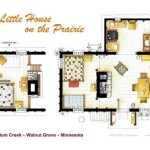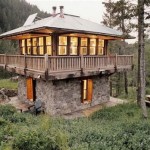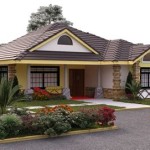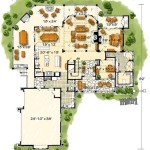Colonial House Plans: 3000 Square Feet, 2 Story
Colonial house plans, particularly those encompassing approximately 3000 square feet across two stories, represent a significant segment of residential architecture in North America. These designs, rooted in architectural styles of the 17th, 18th, and 19th centuries, offer a blend of historical charm and modern functionality. Understanding the characteristics, variations, and considerations involved in selecting and implementing such a plan is crucial for potential homeowners and builders.
The term "Colonial" encompasses a range of sub-styles, each reflecting the architectural preferences and available resources of different regions and time periods. Common features, however, generally include a symmetrical façade, a centered front door, evenly spaced windows with shutters, and a gable roof. The size and layout are often driven by the need to accommodate larger families, with dedicated spaces for formal entertaining and private living.
A 3000 square foot, two-story Colonial home provides ample space for a variety of floor plan arrangements. This size allows for multiple bedrooms and bathrooms on the upper level, alongside a spacious living area, formal dining room, and a potentially open-concept kitchen and family room on the main floor. Additional features such as studies, home offices, and mudrooms can also be incorporated depending on the specific needs of the homeowner.
Key Features of Colonial Architecture
The defining characteristics of Colonial architecture contribute to its enduring appeal and historical significance. These elements not only dictate the aesthetic appearance but also influence the functionality and overall living experience of the home.
Symmetry and Balance: A hallmark of Colonial design is its emphasis on symmetry. The front façade is typically divided evenly around a central axis, often featuring a prominent front door centered between matching window placements on either side. This symmetry extends to the interior layout, with rooms mirrored on either side of a central hallway or staircase. This design principle creates a sense of order and visual harmony.
Window Placement and Shutters: Windows are consistently spaced and often adorned with functional or decorative shutters. The design of these windows frequently includes multi-paned glass, adding to the historical accuracy. The positioning of the windows maximizes natural light and ventilation throughout the house. The regular window pattern contributes to the symmetrical aesthetic of the colonial style.
Roofing and Exterior Materials: Colonial homes commonly feature a gable roof, often with a moderate pitch. Exterior materials vary depending on the region; however, common choices include clapboard siding, brick, and stone. The selection of materials influences the overall character of the home, with brick and stone lending a more formal and substantial appearance, while clapboard siding provides a more casual and rustic feel. Roofing materials traditionally included wood shingles and slate, though modern asphalt shingles are a prevalent and cost-effective alternative.
Interior Details and Millwork: The interior of a Colonial home is characterized by detailed millwork, including crown molding, wainscoting, and paneled doors. These features add a layer of sophistication and historical authenticity. Fireplaces are often a focal point in living rooms and family rooms, providing both warmth and visual interest. The design often incorporates substantial staircases that serve as a central architectural element within the home.
Variations in Colonial House Plans
While adhering to core principles, Colonial architecture encompasses several variations that reflect regional differences and evolving architectural trends. Understanding these variations allows for a more nuanced appreciation of the style and enables informed decisions when selecting a plan.
New England Colonial: This style emphasizes simplicity and practicality. Typically featuring a central chimney, clapboard siding, and a symmetrical façade, New England Colonial homes are characterized by their understated elegance. These homes often prioritize functionality and efficient use of space, reflecting the practical needs of early settlers. The architectural style also incorporates smaller windows to retain heat during the harsh winter seasons.
Georgian Colonial: Inspired by English architecture, Georgian Colonial homes are more formal and elaborate than their New England counterparts. Features include a symmetrical façade, paired chimneys, and decorative elements such as pilasters and pediments. Brick is a common exterior material. The interiors tend to be more opulent, with higher ceilings and more intricate millwork. This style is most prominently seen on the east coast of the United states.
Dutch Colonial: Distinguished by its gambrel roof, which offers increased attic space, the Dutch Colonial style features a broader roof slope and flared eaves. Dormers are a common addition, providing additional light and ventilation to the upper level. These homes typically have a more horizontal appearance compared to other Colonial styles. The architectural style originated from the Dutch settlers in the United States and remains a popular design today.
Southern Colonial: Characterized by large, two-story porticos supported by classical columns, Southern Colonial homes evoke grandeur and elegance. Prominent front porches and balconies are common features, designed to take advantage of the warmer climate. These homes often feature expansive living spaces and are meticulously designed to accommodate for large social gatherings. The style is common in the southern regions of the United States and known for its grand facade.
Considerations for Modern Colonial House Plans
While maintaining the historical charm of the Colonial style, modern adaptations incorporate contemporary features and technologies to meet the demands of 21st-century living. These considerations are vital for ensuring that the home is both aesthetically pleasing and functionally efficient.
Open Floor Plans: One significant adaptation in modern Colonial house plans is the integration of open floor plans. While traditional Colonial homes typically feature separate rooms for living, dining, and cooking, modern designs often combine the kitchen, family room, and dining area into a single, open space. This arrangement promotes social interaction and creates a more spacious and airy atmosphere. The open floor plan concept has increasingly become a popular trend within modern housing construction.
Energy Efficiency: Modern Colonial house plans prioritize energy efficiency through the use of advanced insulation materials, energy-efficient windows, and high-performance HVAC systems. These features reduce energy consumption and lower utility bills. Sustainable design practices, such as solar panel integration and rainwater harvesting systems, are also increasingly incorporated into modern Colonial homes. The utilization of sustainable practices aligns with the increasing emphasis on environmental consciousness.
Modern Amenities: Modern Colonial homes incorporate contemporary amenities such as smart home technology, updated kitchen appliances, and luxurious bathrooms. These features enhance comfort, convenience, and functionality. The integration of modern amenities does not detract from the historical character of the home; rather, it enhances the overall living experience. Central air conditioning, modern plumbing standards, and advanced electrical systems are now essential components of these homes.
Adaptability and Flexibility: The 3000 square foot size provides ample opportunity for adaptable and flexible spaces. Home offices, media rooms, and guest suites can be incorporated to accommodate the changing needs of a growing family. The design of the home should allow for future modifications and expansions to meet evolving lifestyle requirements. The flexibility of space is a significant advantage of larger two-story Colonial homes.
Lot Size and Orientation: The selection of a Colonial house plan should take into account the size and orientation of the building lot. The design of the home should maximize natural light and ventilation while minimizing exposure to harsh weather conditions. The positioning of the home on the lot also influences the curb appeal and overall aesthetic impact. Considerations for landscaping and outdoor living spaces should also be taken into account during the planning process. The placement of the driveway and any external structures must align with local zoning regulations. The orientation of the home should also consider the path of the sun to optimize natural light and solar heating during colder months.
Cost Considerations: The cost of building a 3000 square foot, two-story Colonial home can vary widely depending on the location, materials used, and level of customization. A detailed budget should be established before commencing construction, taking into account all expenses, including land acquisition, architectural fees, permits, materials, labor, and landscaping.
In summary, Colonial house plans that are approximately 3000 square feet and two stories offer a durable blend of historical charm and modern functionality. The key to selecting and implementing the right design lies in understanding the core features of the style, appreciating its variations, and incorporating modern amenities and technologies. A thorough consideration of lot size, orientation, and cost factors is essential for successfully building a Colonial home that meets the needs and preferences of its occupants.

Colonial Style House Plan 4 Beds 3 5 Baths 3000 Sq Ft 329 128 Houseplans Com

Modern Colonial Masterpiece 3000 Sq Ft House Plan 963 00965

Custom 2 Story Houses New Two Home Plans Housing Development D

Custom 2 Story Houses New Two Home Plans Housing Development D

Colonial House Plans The Designers Floor Plan Designs

Spanish Colonial 8303 4 Bedrooms And 3 5 Baths The House Designers

3000 3500 Sq Ft House Plans Modern Ranch 1 Or 2 Story

2 Story Colonial House Plans

Two Story Colonial Modular Homes New Jersey 2500 3000 Sq Ft

Stylish 3 Bedroom Home With Unfinished Walkout Basement And Versatile Bonus Room








